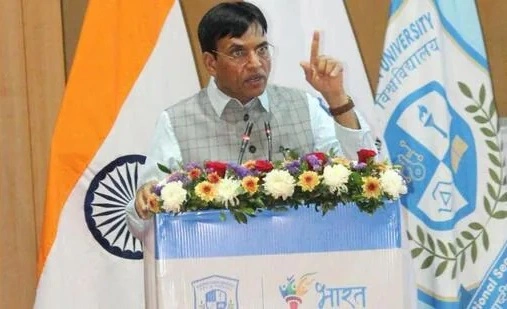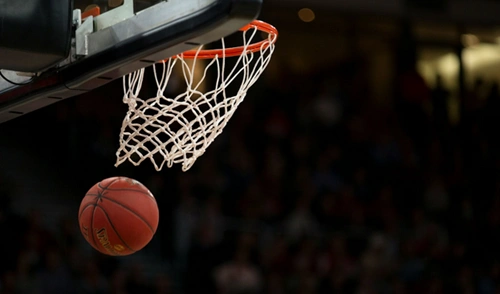India, a nation of over 1.4 billion people, has long been a cricket-dominated sporting powerhouse. However, recent years have seen the country making steady strides in other disciplines, showcasing potential across a variety of sports on the global stage. Now, the government has set an ambitious target: to rank among the top 10 sporting nations in the world by 2036.
This vision, articulated by Union Minister Mansukh Mandaviya, underscores the country’s aspirations to establish itself as a multi-sport nation, fueled by strategic investments in infrastructure, grassroots development, and talent nurturing. Mandaviya’s statement, delivered during the ‘Fit India School Week’ event, reflects the government’s determination to bring about a sporting revolution in the country.
The Vision for 2036

India’s goal to enter the top 10 sporting nations by 2036 aligns with the country’s broader ambitions of hosting the Olympics in the same year. This dual objective highlights a long-term plan to not only bolster sporting performance but also showcase India’s capability as a global sports hub.
Mandaviya emphasized the role of youth in achieving this goal, stating, “If we want to make India a top sporting nation, we must first make our youth physically and mentally fit.” His remarks point to the importance of fostering a culture of physical fitness and sportsmanship from a young age, starting in schools and local communities.
Current Challenges in Indian Sports
While India has made significant progress in sports like badminton, wrestling, hockey, and track and field, several challenges remain:
- Infrastructure Gaps: Despite notable improvements, world-class sports facilities are still concentrated in metropolitan areas, leaving rural regions underserved.
- Funding and Sponsorships: Many athletes struggle to secure adequate financial support, impacting their training and international exposure.
- Talent Identification: The vast pool of talent in India often remains untapped due to a lack of structured scouting systems.
- Cultural Preferences: Cricket continues to dominate the national psyche, overshadowing other sports and limiting their growth.
Addressing these hurdles is critical if India is to compete with established sporting powerhouses like the United States, China, and Germany.
Strategic Investments in Sports Development
The Indian government has already taken several steps to improve the country’s sporting ecosystem:
- Khelo India Programme: Launched in 2018, this initiative has been pivotal in identifying and nurturing young talent across various sports disciplines.
- Target Olympic Podium Scheme (TOPS): This program provides financial and logistical support to elite athletes, helping them prepare for international competitions.
- Increased Budget Allocation: In recent years, the sports budget has seen significant increases, with funds directed toward infrastructure, coaching, and athlete welfare.
- Focus on Grassroots: Efforts to build sports infrastructure in rural areas and train local coaches are helping bridge the urban-rural divide in sports development.
Rising Stars and Recent Successes
India’s recent performances on the global stage indicate that the country is on the right track. The historic gold medal wins at the Tokyo Olympics and Paralympics, the resurgence of Indian hockey, and the rise of world-class athletes like Neeraj Chopra, PV Sindhu, and Lovlina Borgohain have instilled confidence in India’s potential.
Furthermore, India’s hosting of international events, such as the FIH Hockey World Cup and the Badminton World Championships, demonstrates its growing credibility as a global sports destination.
Building a Sporting Culture
Beyond infrastructure and funding, creating a robust sporting culture is essential to achieve the 2036 goal. This includes:
- Sports Education: Making physical education an integral part of school curricula to instill the importance of fitness and sports early on.
- Public Engagement: Promoting sports beyond cricket through campaigns and social media to attract more spectators and sponsors.
- Corporate Partnerships: Encouraging private-sector involvement to boost funding and create professional opportunities for athletes.
A Global Message
India’s aspirations to be among the top 10 sporting nations by 2036 are more than just a matter of national pride—they are a testament to the country’s desire to foster inclusivity, unity, and global collaboration through sports. Achieving this goal would not only enhance India’s global standing but also inspire millions of young athletes to dream big.
Conclusion
The journey to becoming a top sporting nation is not without its challenges, but India has shown that it is ready to take bold steps toward realizing this vision. With a mix of government initiatives, corporate support, and public enthusiasm, the dream of seeing India emerge as a sporting superpower by 2036 is both ambitious and achievable. As Mandaviya aptly put it, the key lies in making the youth of today physically and mentally fit, for they are the torchbearers of a brighter, sportier tomorrow.

